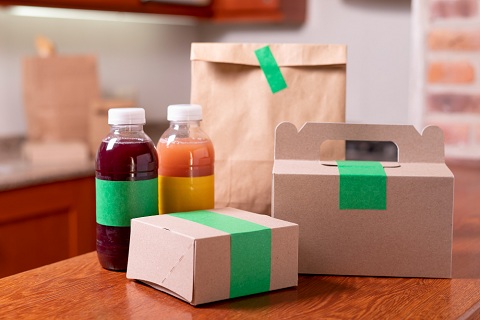Describe four types of packaging that prevent tampering with medicine. This is a common question you will encounter if you are in your student life but as you are here then we will give you your answer in a simple way. Keep reading!
But before that, we have to understand basic terms like tampering with medicine
Tampering :
Tampering is the act of touching or changing something that you should not, usually to cause damage or commit an illegal act. For example, tampering with medicine can involve changing its ingredients, dosage, or packaging to harm or deceive consumers.
Describe four types of packaging that prevent tampering with medicine.
Now let’s discuss four types of packaging that prevent tampering with medicine and that are:
1. Child-resistant packaging:
This type of packaging is intended to make it difficult for children to open and use the medication. The lid is usually opened using a push-and-turn or squeeze-and-turn mechanism. For example, many prescription bottles and over-the-counter pain relievers use child-resistant packaging.
2. Child-resistant packaging:
This type of packaging is intended to make it difficult for children to open and use the medication. The lid is usually opened using a push-and-turn or squeeze-and-turn mechanism. For example, many prescription bottles and over-the-counter pain relievers use child-resistant packaging.
3. Blister packaging:
Each tablet or capsule is sealed in its cavity or blister. It helps to keep the medicine safe from contamination, damage, or tampering. It also shows the user the shape, color, and markings of the medicine. For example, some vitamins, supplements, and cold remedies use blister packaging.
4. Bottles with locking mechanisms:
These types of packaging use a locking device or seal to prevent unauthorized access to the medicine. It helps to deter drug theft, diversion, and misuse. It also gives a visual indication of tampering if the seal is broken or the lock is damaged. Some controlled substances, narcotics, and opioids use bottles with locking mechanisms.
Some Common FAQs about packaging that prevent tampering with medicine.
Now let’s discuss some frequently asked questions about our question “Describe four types of packaging that prevent tampering with medicine” so that you will get more knowledge about this question.
What information should be included in medicine packages?
The MHRA’s Best Practice Guidance on Labeling and Packaging of Medicines states that the pack must include the name of the medicinal product (brand name, followed by strength and pharmaceutical form) as well as the generic name(s) of the active ingredients if the product contains up to three active substances.
How are pills packed?
In America, most pills are simple. Unlike Europeans, American consumers are accustomed to seeing most medications packaged in bottles. An estimated 80% of all prescriptions in the US are dispensed in bottles, with approximately 20% packaged in blisters.
Why use a pillbox?
A pill box is a container used to store your medication doses for a set period. A pill box is also known as a pill container or case. If you have to take multiple medications, a pill box can be extremely useful. It will help you avoid missing the doses of your medications.


